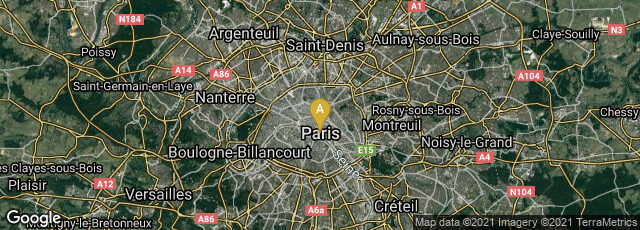

A: Paris, Île-de-France, France
Duhamel by Drouais, working on his Éléments d’architecture navale.
In 1749 French scientists René Antoine Ferchault de Réaumur and Henri Louis Duhamel du Monceau issued the first volume of Descriptions des arts et métiers faites ou approuvées par Messieurs de l'Académie royale des Sciences from Paris. Eventually comprising 72 works in 114 parts printed in folio format, with over 2100 engraved plates and plans, the work was completed 65 years later, in 1814.
This series was the most important and the largest work on the mechanical and industrial arts of eighteenth century France, and one of the earliest projects of its kind undertaken in any country. Although encyclopedic in scope, the work was not conceived in parallel to Diderot and D’Alembert’s Encyclopédie, but in response to the perceived function of the Académie royale des sciences. A statement was published in 1699 in Histoire, an organ of the Académie, that outlined the motives and aims behind a proposed Description des arts et métiers:
“When this work is completed, it will be easy for each craft to compare the practices in vogue in France with those pursued in other countries; and from this comparison, the French and the inhabitants of these foreign lands will profit equally” (quoted in Cole and Watts, p. 7).
Each article had sections on materials, tools and apparatus, processes and methods, and illustrations of the métier. The wide range of crafts and industries covered nearly every aspect of French industrial and artisan life: coal-mining, fishing, textile manufacture, carpentry and cabinet-making, masonry, glass-blowing, ceramics, candle- and soap-making, barbering and wig-making, papermaking and bookbinding, iron- and tinsmithing, among other fields. Although the work was very much a separate enterprise, the Arts et métiers inspired many articles in the Encyclopédie, and can be said to complement the latter work. Both were essential to any well-balanced library in France and abroad.
Of the two principal figures involved in the Arts et métiers René Antoine Ferchault de Réaumur was elected to the Académie at age 25, and had a prodigious output, submitting memoir after memoir on a variety of subjects, mostly relating to pure mathematics and pure science, but including his celebrated description of English steel production. Henri Louis Duhamel du Monceau, who succeeded Réaumur, was interested in applied sciences, in particular chemistry, botany and mechanics. Réaumur died before the first cahier of the Arts et métiers appeared, and Duhamel du Monceau assumed control of the project some time after Réaumur’s death in 1757. Other contributors included François Bedos de Celles, Fredrik Chapman, Charles Romme, Michel Ferdinand d’Albert d’Ailly, duc de Chaulnes, the Abbé Jean-Antoine Nollet, Jean-Jacques Perret, Charles-René Fourcroy de Ramecourt, August-Denis Fougeroux de Bondaroy, François-Alexandre Pierre de Garcault, Jérome le Français de Lalande, Jean Jacques Paulet, Jeanne-Marie Roland de la Platière, Nicolas Christien de Thy, comte de Milly (1728-84) and others. The Académie and the authors of the Arts et métiers sought help from men with practical experience whenever possible.
Though it was written by the elite rather than the artisan class, the combination of the best scientific minds and the best practical minds of the era produced an invaluable reference work and an unparalleled social record of the artisan classes, and recorded for posterity manufacturing methods that would eventually become further mechanized in the Industrial Revolution. Like Diderot’s Encyclopédie, the Arts et métiers is one of the greatest productions of the French Enlightenment, and a benchmark in social and scientific history.
Arthur H. Cole and George B. Watts, The Handicrafts of France as Recorded in the Description des Arts et Métiers (1952).